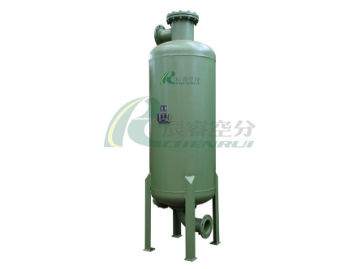
1. Hit-stick to dust particles in the air, or move inertially with the airflow, or move randomly, or move due to a certain field force. When a moving particle hits an obstacle, the gravitational force between the particle and the surface of the obstacle makes it stick to the obstacle
2. Fiber filter material The filter material should be able to effectively intercept dust particles without forming excessive resistance to the airflow. Non-woven fiber materials and special paper meet this requirement. The messy and intertwined fibers form countless barriers to particles, and the wide space between the fibers allows the airflow to pass smoothly.
3. Resistance The negative airflow of the fiber circumvents and produces a small resistance. The sum of the resistance of countless fibers is the resistance of the filter. The filter resistance increases with the increase of air flow. By increasing the area of the filter material, the relative wind speed through the filter material can be reduced to reduce the filter resistance.

4. Inertial collision and diffusion collision The efficiency varies with the size of the dust particles. The ratio of the amount of dust trapped by the filter to the amount of dust in the unfiltered air is the "filtration efficiency". Particles smaller than 0.1mm (micrometers) are mainly used for diffusion motion. The smaller the particles, the higher the efficiency; the particles larger than 0.5mm are mainly used for inertial motion. The larger the particles, the higher the efficiency. Between 0.1mm and 0.5mm, the efficiency has a lowest point.
5. Dynamic performance The captured dust creates additional resistance to the airflow, so the resistance of the filter gradually increases during use. The captured dust forms a new obstacle, so the filtration efficiency is slightly improved. Most of the trapped dust gathers on the windward surface of the filter material. The larger the filter area, the more dust it can hold, and the longer the filter life.
6. Static electricity If the filter material is charged with static electricity or dust is charged with static electricity, the filtering effect can be significantly improved. The reason: static electricity makes dust change the trajectory of movement and hit obstacles, and electrostatic force participates in the work of sticking. 5. Selection of activated carbon filter The main factors that affect the adsorption effect and service life of activated carbon filter are: the type and concentration of pollutants, the residence time in the air filter material, the temperature and humidity of the air. In actual selection, the type of filter and the type of activated carbon should be determined according to conditions such as the type of pollutant, the concentration and the processing air volume. The capacity of the filter can be roughly estimated by comparing the amount of activated carbon material in the filter. For example, a filter with a windward surface of 610×610mm contains 30kg of the most common granular activated carbon, and another so-called new high-tech product contains 2kg of activated carbon. The activated carbon of that new product may have a much larger unit adsorption capacity than granular carbon. But its service life is one-tenth that of the ordinary particulate carbon filter. By monitoring the changes in the concentration of pollutants before and after the filter, it can be determined whether the activated carbon should be replaced. However, there is no practical and convenient monitoring method in the country. Therefore, users can only determine the service life of activated carbon filters according to the specified period or experience.
咨询热线
+86-571-63492917